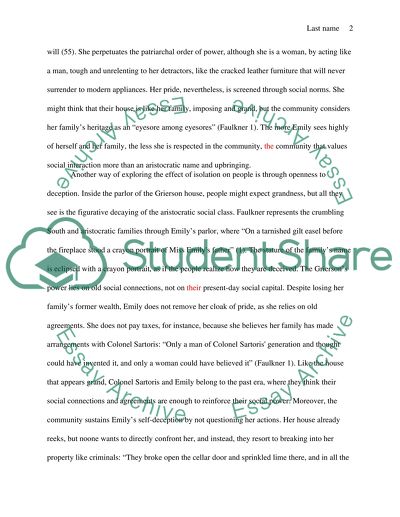Cite this document
(“Isolation and Repression in Faulkners A Rose for Emily Research Paper”, n.d.)
Isolation and Repression in Faulkners A Rose for Emily Research Paper. Retrieved from https://studentshare.org/literature/1471562-isolation-and-repression-in-faulkners-a-rose-for-emily
Isolation and Repression in Faulkners A Rose for Emily Research Paper. Retrieved from https://studentshare.org/literature/1471562-isolation-and-repression-in-faulkners-a-rose-for-emily
(Isolation and Repression in Faulkners A Rose for Emily Research Paper)
Isolation and Repression in Faulkners A Rose for Emily Research Paper. https://studentshare.org/literature/1471562-isolation-and-repression-in-faulkners-a-rose-for-emily.
Isolation and Repression in Faulkners A Rose for Emily Research Paper. https://studentshare.org/literature/1471562-isolation-and-repression-in-faulkners-a-rose-for-emily.
“Isolation and Repression in Faulkners A Rose for Emily Research Paper”, n.d. https://studentshare.org/literature/1471562-isolation-and-repression-in-faulkners-a-rose-for-emily.


